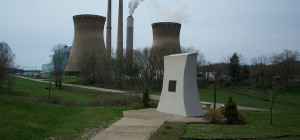South Korea and North Korea are two separate countries located on the Korean Peninsula in East Asia. South Korea, also known as the Republic of Korea, is a democratic country and a member of the United Nations. North Korea, officially known as the Democratic People’s Republic of Korea, is a communist country that is not a member of the United Nations. The two countries have a long history of tension and conflict, including the Korean War in the 1950s, and continue to have a complex relationship.
The Korean War, which began in 1950 and ended in 1953, resulted in the division of the Korean Peninsula into two separate countries: North Korea and South Korea. The war was fought between North Korea, which was supported by the Soviet Union and China, and South Korea, which was supported by the United States and other UN member countries.
Since the end of the war, the two countries have had a tense relationship marked by sporadic military clashes, political hostility, and economic sanctions. North Korea has developed nuclear weapons, which has increased tensions with South Korea and its allies, including the United States.
In recent years, there have been some efforts to improve relations between the two countries. In 2018, the leaders of North and South Korea met for a historic summit, which marked the first time a North Korean leader had ever visited the South. The two leaders signed a joint statement committing to work towards denuclearization of the Korean Peninsula and to improve relations between the two countries.
Despite this, the two countries technically still remain at war as a peace treaty was never signed and the relations are still fragile and dependent on various factors, including the leadership and policies of both countries and the actions of other nations, particularly the United States.
The Korean War
The Korean War was a military conflict between North Korea and South Korea that began on June 25, 1950, and lasted until July 27, 1953. The war was sparked by the attempt of the communist government of North Korea to unify the Korean Peninsula under its rule. North Korea, which was supported by the Soviet Union and China, invaded South Korea, which was supported by the United Nations, led by the United States.
The war was brutal and resulted in significant loss of life on both sides, with estimates ranging from 1.2 to 4 million people killed. The majority of those who lost their lives were civilians. The war also caused extensive damage to the Korean Peninsula, with cities, towns, and villages being destroyed and millions of people being displaced.
The war ended in a stalemate, with an armistice agreement being signed on July 27, 1953, which established the DMZ (Demilitarized Zone) that still exists today. The armistice was signed by the United Nations Command, North Korea, and China, but not South Korea.
The war technically never ended, as a peace treaty was never signed, and a state of ceasefire exists between the two countries. This means that the two Koreas are still technically at war with each other.
The Korean War was significant in the context of the Cold War, with the United States and the Soviet Union and their respective allies becoming directly involved in the conflict. It also marked the first time the United Nations intervened in a conflict as a collective security organization.
The DMZ
The DMZ, or Demilitarized Zone, is a strip of land that runs across the Korean Peninsula, separating North Korea and South Korea. The DMZ is a buffer zone between the two countries, established at the end of the Korean War in 1953 to serve as a neutral area and prevent further conflicts. The DMZ is approximately 160 miles (260 km) long and 2.5 miles (4 km) wide.
The DMZ is heavily fortified on both sides, with minefields, barbed wire fences, and guard towers. It is considered one of the most heavily militarized borders in the world, with tens of thousands of troops on both sides. The DMZ also serves as a wildlife sanctuary, as the area has been untouched by human activity for decades.
The DMZ is also a popular tourist destination, with visitors able to visit the Joint Security Area (JSA) where the armistice that ended the Korean War was signed and the Third Tunnel of Aggression, a tunnel excavated by North Korea that was discovered by the South Koreans in 1978, as well as other places.
However, entering the DMZ requires permission from both governments and is subject to strict security measures and protocols.
The DMZ serves as a reminder of the ongoing division and tensions between the two countries and of the unresolved status of the Korean War.
Conclusion
In conclusion, the Korean War was a military conflict that took place between 1950 and 1953 between North Korea and South Korea. It was sparked by the attempt of the communist government of North Korea to unify the Korean Peninsula under its rule. The war resulted in significant loss of life on both sides, with estimates ranging from 1.2 to 4 million people killed and caused extensive damage to the Korean Peninsula. The war ended in a stalemate with an armistice agreement being signed on July 27, 1953, which established the DMZ (Demilitarized Zone) between the two countries. However, a peace treaty was never signed, meaning that technically the war never ended and the two countries are still technically at war with each other. The Korean War was significant in the context of the Cold War, with the United States and the Soviet Union and their respective allies becoming directly involved in the conflict. It also marked the first time the United Nations intervened in a conflict as a collective security organization. The tension between the two Koreas still exist today and the DMZ serves as a reminder of the ongoing division and unresolved status of the Korean War.









